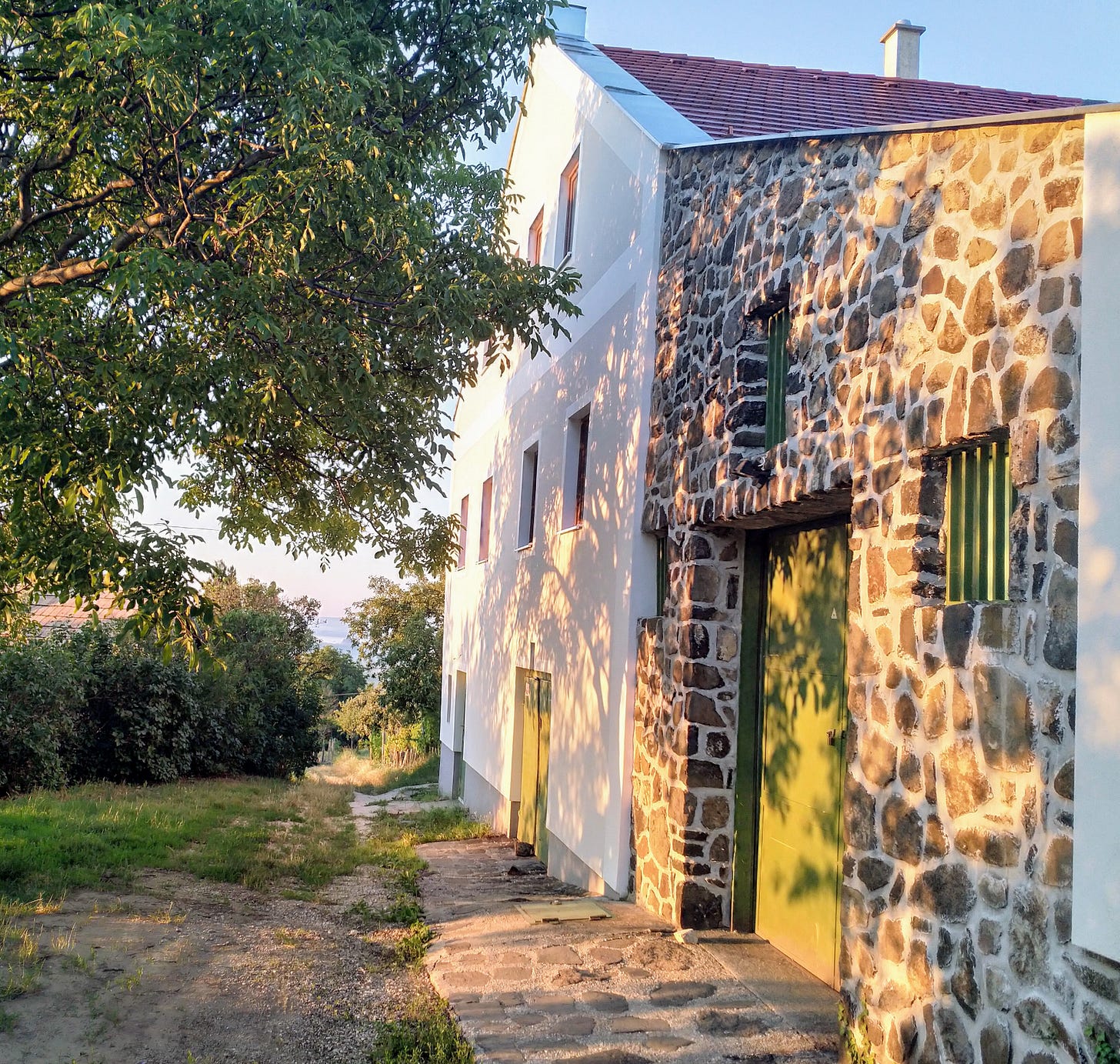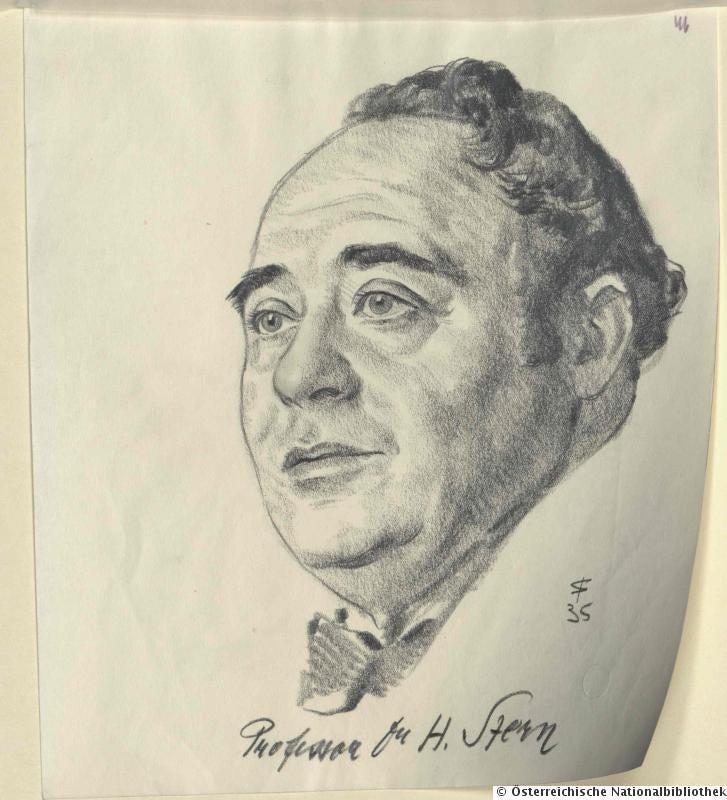Toszkán, elzászi meg más menő borvidékeken járva nem nehéz olyan borászatokat találni, amikben olykor, öt, nyolc vagy akár több generáción át adták a szülők, nagyszülők a gyerekeik kezébe a pincekulcsot. A személyes kedvencem az elzászi Josmeyer birtok, ahol éppen Céline és Isabelle testvérek a sorosok, hogy a 170 éves birtoknak gondját viseljék. Csodálatos és őszintén irigylésre méltó az ilyen folytonosság. Elképesztően nagy tudás, a termőhelyekkel és a szőlőfajtákkal kapcsolatos tapasztalatok tudnak felhalmozódni. Nemritkán az ilyen borászatoknál nemcsak a pincekulcsot adja át egyik generáció a másiknak, hanem a kereskedőiket és a törzsfogyasztó családokat is. Sajnos nekünk nem ezt dobta a gép.
Ezzel együtt a borászatunk történetében felismerhető a régió meglehetősen turbulens történelme és olykor drámai eseményei. A pince és a hagyományosan hozzá tartozó területek történetének pontos feltárása még sok kutatást és levéltárazást igényel, de hadd osszam meg veletek azt, amit már most is tudunk.
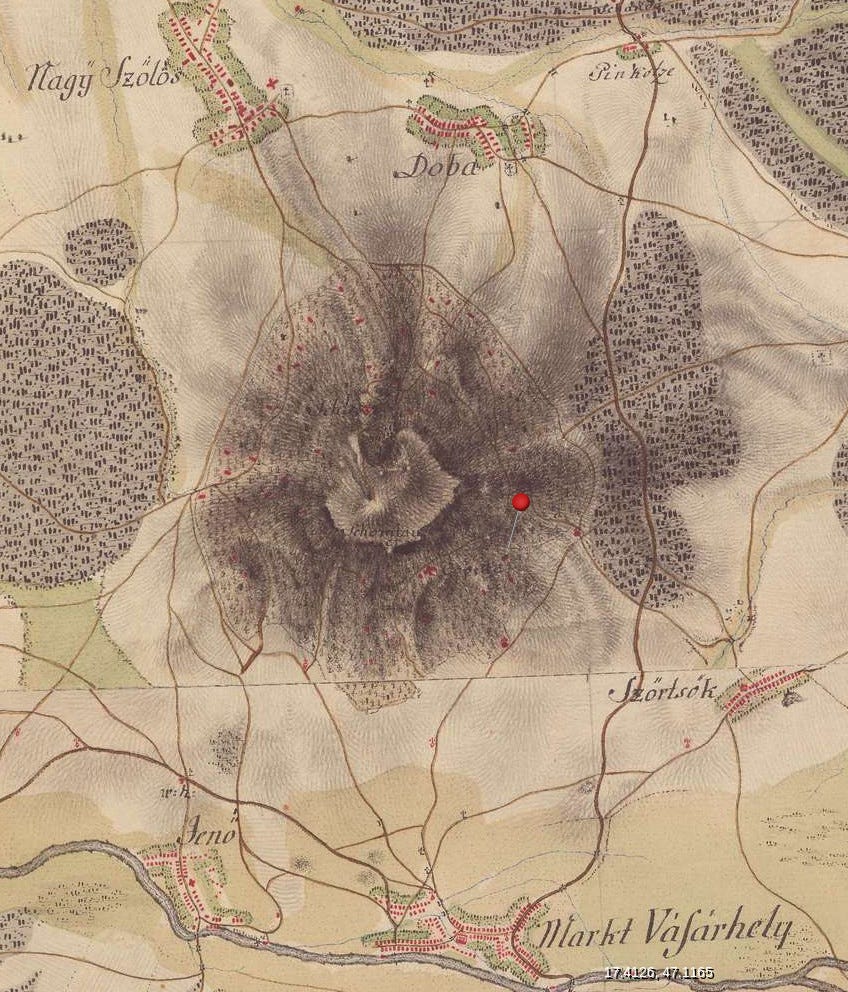
Az első nyomát a borászatunknak az 1780 és 1784 közötti Első Katonai Felmérés térképén találtam meg. A hétéves háborút (1756–63) követően a Habsburg-birodalom hadvezetése is rájött, hogy a zárt csatarendű csaták kora lejárt, a terepviszonyokhoz alkalmazkodó, tagolt hadtestek jelentősége viszont megnőtt. Így a hadseregek igénye megnőtt a topográfiai térképek iránt. Így született meg 1780–84 között Magyarország első katonai felmérése, amely az első olyan térképmű, amelyik településszint alatt (utcák, házak, dűlők stb.) ábrázolja szinte a teljes országot.
Egy aprócska piros folt egy térképen, de nekünk ez sokat jelent. Ez a térkép persze csak azt bizonyítja, hogy egy hadászati szempontból jelentős méretű épület állt ott, ahol ma is áll a pincénk.
A második fontos forrás, amivel már el tudtunk indulni, az az 1789-ben készült vásárhelyi Somló-szőlőhegy 19. számú térképe. Ezen a térképen a maival lényegében megegyező területen, a 269-es helyrajzi számon látható az egykori szőlőbirtok. A térkép melléklete szerint ekkor Rumi József (1744–1807) rumi nemesember birtokában volt a birtok és a pinceépület.
A Rumi család az 1800-as évek második felében a bécsi Stern családnak adta el a pincét és a szőlőit. Ezt a szerződést még nem találtuk meg, de azt tudjuk, hogy a Rumi család annyira elszegényedett és eladósodott, hogy kénytelenek voltak eladni a birtokaikat.
A Stern testvérekről keveset tudunk. Valószínűleg prágai származású család fiai, akik Bécsben éltek. Stern Hugó Bécsben elismert beszédhibákra specializálódott szakorvos volt. Az öccséről, Ervinről akivel kettesben birtokolták a somlói borászatot egyelőre még keveset tudunk.
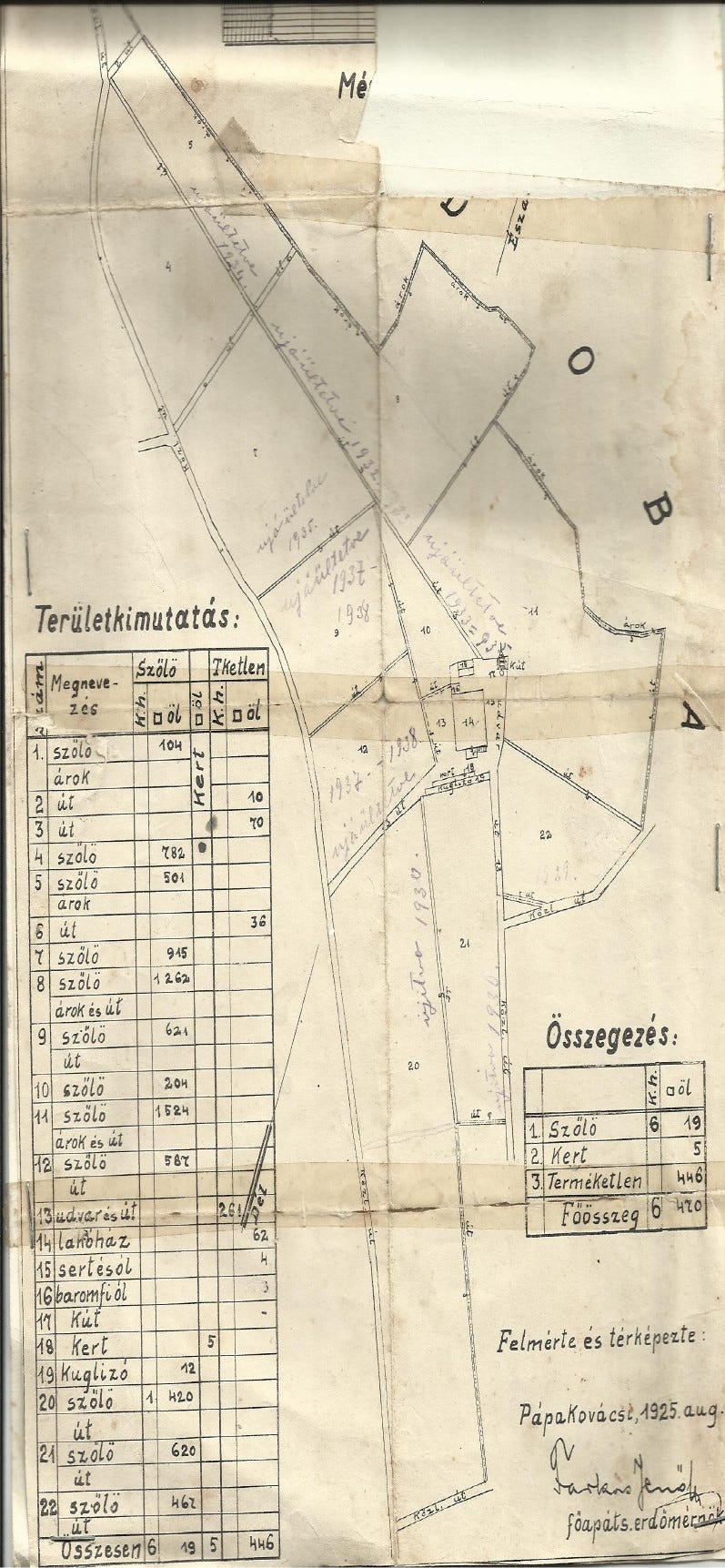
A Stern testvérektől aztán a Pannonhalmi Főapátság vette meg 1901-ben az akkor Bécsi-szőlőnek is nevezett területet, kiegészítve ezzel a már 1811-ben vásárolt, Somogyinak nevezett ültetvényeiket. Ezt az adásvételi szerződést már ismerjük. 1911-ben 53.800 korona áron cserélt gazdát a birtok és a borászat. Ez mai árakon úgy 400 ezer euró körüli összeget jelent. Az apátsági időszakról már bőségesen vannak információink. Például tudjuk, hogy az egyik boruk Somló Gyöngye néven 3,8 korona, vagyis mai áron úgy 6000 Ft áron volt kapható a rend budapesti borlerakatában a nyolcadik kerületben, a József krt. 42. szám alatt. A sors tréfája, hogy ma is van egy vinotéka ugyanott, csak már nem a bencés rendé. De azt is tudjuk, hogy az apátsági időszakban a borászat vincellére az a Fazekas mester volt, akinek az unokája ma nálunk végzi azt a munkát, amit egykoron a nagyapja. Ez a folytonosság is az oka, alapja annak, hogy a borászatunk a Somlói Apátsági Pince nevet kapta. A Somlón egyébként volt még két másik apátsági pince. A celli és a zirci apátságoknak is volt szőlője és pincéje a Somlón.
1948-ban, az államosításkor elvették a szerzetes rendek birtokait, és így az apátsági szőlőt pár száz négyszögöles parcellákra osztották fel. A pincét és az alatta fekvő kicsiny ültetvényt az addigi vincellér családja, Fazekasék kapták meg. A Fazekas családtól vettük meg 2001-ben a pinceépületet, és az utána következő években több mint húsz helyrajzi számról vásároltuk egybe az egykori ültetvény területeit.
A pincénk és borászatunk úgy negyed évezrednyi múltját ismerjük úgy-ahogy. Hogy előtte is műveltek szőlőt ugyanezekben a vágókban, azt is biztosan tudjuk. Korok, nemes urak, főapátok és pártfőtitkárok, forradalmak és háborúk jöttek-mentek, a pincében pedig minden évben erjedt a must és készültek a somlói borok. Amit pedig meg tudunk, azt meg is fogjuk tenni annak érdekében, hogy ameddig mi itt vagyunk addig a pince körül és a pincében pontosan az történjen, mint ötven, száz vagy kétszázötven éve is.
Our story
When travelling in Tuscany, Alsace, or other famous wine regions, it is not difficult to find wineries where the cellar keys were handed over by parents and grandparents to their children and grandchildren sometimes spanning five, eight, or more generations. My personal favourite is the Josmeyer winery in Alsace, where two sisters, Céline and Isabelle are currently in charge, taking care of their 170-year-old family vineyards and winery. Such continuity is wonderful and truly admirable. Enormous amount of knowledge and experience related to the vineyards and grape varieties can accumulate over time. Often, in such wineries, not only the keys to the cellar are handed down from one generation to the next, but also the clients and the loyal consumers, too.
Unfortunately, it is not how the cards fell for us.
The turbulent past of our region is recognizable in the history of our winery. The exploration of the exact history of our winery and vineyards still requires much research and archival work, but let me share with you what we already know.
I found the first trace of our winery on the map of the First Military Survey made between 1780 and 1784. Following the Seven Years' War (1756-1763), the military leadership of the Habsburg Empire realized that the era of closed battle formation was over, and the importance of adapting to the terrain and having segmented armies had increased. Therefore, the demand for precise topographic maps increased. Thus, Hungary's first military map was created between 1780 and 1784, which was the first map to depict almost the entire country below the settlement level (streets, houses, vineyards, etc.).
Only a tiny red mark on that map, but it means a lot to us. That mark proves that a building of significant size stood where our cellar stands today.
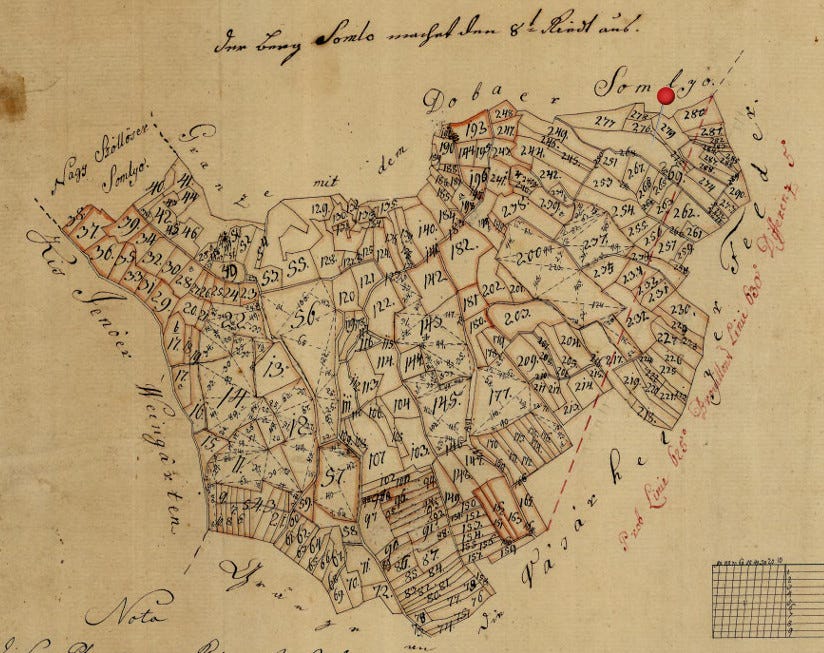
The second important source that we could already start with was the map of Somló Hill Vineyards No. 19 in Vásárhely made in 1789. On this map, we can clearly see the former vineyard estate at number 269, which is essentially the same as today's area. According to the map's appendix, the estate and the cellar building were owned by József Rumi (1744–1807), a nobleman from Rum village.
We do not know exactly when but in the second half of the 1800s, the Rumi family sold the cellar and vineyards to the Stern family from Vienna. We have not found this contract yet, but we know that the Rumi family became so impoverished and indebted that they had to sell their properties. We know little about the Stern brothers. They were probably sons of a family from Prague origin who lived in Vienna. Doctor Hugo Stern was a recognized specialist in speech defects in Vienna. We still know little about his brother Ervin, with whom they jointly owned the Somló winery.
The Pannonhalma Abbey bought the land in 1901 from the Stern brothers, which was then called Bécsi Vineyard, thereby adding it to their Somogyi vineyards, which were purchased already in 1811. We got a copy of this sales contract from Pannonhalma. The estate and winery changed hands in 1901 for 53,800 koronas, which is around 450,000 USD at current prices. About the abbey period we have abundant information. For instance, we know that one of their wines, Somló Gyöngye, was sold for 3.8 koronas, equivalent to about 18 USD today, at the order's Budapest wine storage in District VIII, at József krt. 42. It is ironic that there is still a wine shop there today, but it no longer belongs to the Benedictine order. We also know that during the abbey period, the cellar master of the winery was Fazekas, whose grandson now works for us, doing the same job his grandfather once did. This continuity is the reason why our winery is called the Somló Abbey Cellar. There were two other abbey cellars on Somló as well, the Celli and Zirci abbeys also had vineyards and cellars here.
In 1948, during the nationalization (communization), the properties of the monastic orders were confiscated, and the abbey vineyards were divided into small parcels. The cellar and the small vineyard underneath it were given to the family of the former cellar master, the Fazekas family.
We purchased the cellar building from the Fazekas family in 2001, and in the following years, we bought up the former vineyard's plots from over twenty cadastral numbers.
We are familiar with a quarter of a millennium of the history of our cellar and winery. We are certain that wine was already made in these same vineyards well before that time. Ages, noblemen, abbeys and party secretaries, revolutions, and wars have come and gone, but every year, the must ferments and the Somló wines are made in the very same cellar.
And naturally we will do everything we can to secure that the story continues and the same magic happens around and in the cellar as it did fifty, a hundred, or two hundred years ago.




